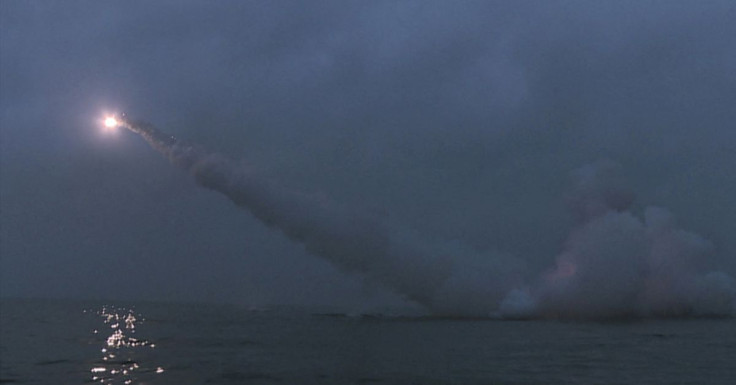
Just before the start of U.S.-South Korea military drills, the official news agency KCNA reported on Monday that nuclear-armed North Korea had tested two strategic cruise missiles from a submarine on Sunday.
Nuclear weapons are usually referred to as "strategic" weapons.
According to KCNA, the launch verified the system's dependability and tried the submarine units that make up North Korea's nuclear deterrent's underwater offensive capabilities.
The Joint Chiefs of Staff (JCS) of South Korea declared that the military was on high alert and that the nation's intelligence agency was analyzing the launch's details with its American counterpart.
Dubbed "Freedom Shield 23," the 11-day joint exercises between South Korean and American forces will start on Monday and be conducted on a scale not seen since 2017.
The two militaries have stated that the drills, which include field exercises like amphibious landings, will strengthen the allies' combined defensive stance.
North Korea has long objected to exercises because it sees them as a practice for an invasion.
In an attempt to strengthen its nuclear deterrent and make more weapons fully operational, it has carried out a record number of missile tests and exercises in the last year.
"It's very regretful that North Korea is using our regular, defensive drills as a pretext for provocation," said Koo Byoung-sam, spokesperson for South Korea's unification ministry handling relations with the North. "I hope North Korea realizes that there is nothing they can earn from escalating tensions on the Korean peninsula," reports Reuters.
The submarine launches aimed to show North Korea's determination to control a situation in which, KCNA said, "the U.S. imperialists and the south Korean puppet forces are getting evermore undisguised in their anti-DPRK military maneuvers."
DPRK stands for North Korea, officially the Democratic People's Republic of Korea.
The strategic cruise missiles were fired from the "8.24 Yongung" submarine in the water off the east coast of Korea in the early hours of Sunday, according to KCNA.
Before striking a target in the sea, the missiles traveled approximately 1,500 kilometers (932 miles), according to the KCNA.
A JCS spokesperson said that not all of North Korea's claims were true, but he would not elaborate.
Uncertainty exists regarding North Korea's progress in developing the miniature nuclear warheads required for such rockets. If the North restarts nuclear testing, analysts say that perfecting smaller warheads would probably be a major objective.
North Korean cruise missiles fired from a submarine pose a danger that the United States and its allies must take seriously, but Leif-Eric Easley, a professor at Ewha University in Seoul, suggested that Pyongyang may be exaggerating its capabilities.
"The Kim regime wants to show it can match or surpass military capabilities on display during U.S.-South Korea defense exercises. Yet the reality is North Korean soldiers are poorly fed and are being ordered to help farmers address the country's food shortage," Easley said.
Hirokazu Matsuno, chief cabinet secretary of Japan, stated that there was no information that the missile damaged or flew toward Japan's waters.
"If North Korea's announcement that the missile had a range of more than 1,500 kilometers was true, it would pose threats to the region's peace and stability – we are concerned," Matsuno said.
He said U.S. military deterrence in Asia-Pacific is "essential" in the region, adding the North "may step onto further provocative acts such as a nuclear test."
Despite having a large submarine force, North Korea only has one experimental ballistic missile submarine, the 8.24 Yongung (August 24th Hero).
The development of missiles, submarine technology, and operational protocols, as well as the practical instruction of new submariners, according to analysts, depend on it.
According to North Korea, a functioning ballistic missile submarine is being built.
Kim Jong Un, the leader of North Korea, gave instructions to the military to step up training exercises to prevent and, if necessary, react to a "real war" while supervising the launch of a short-range ballistic missile (SRBM) exercise on Thursday.
Kim led a ruling party meeting to discuss and decide on "important, practical measures" to boost the country's war deterrence amid stepped-up actions by the United States and South Korea, state media reported on Sunday.
The report did not provide specifics on the measures.
© 2025 Latin Times. All rights reserved. Do not reproduce without permission.



